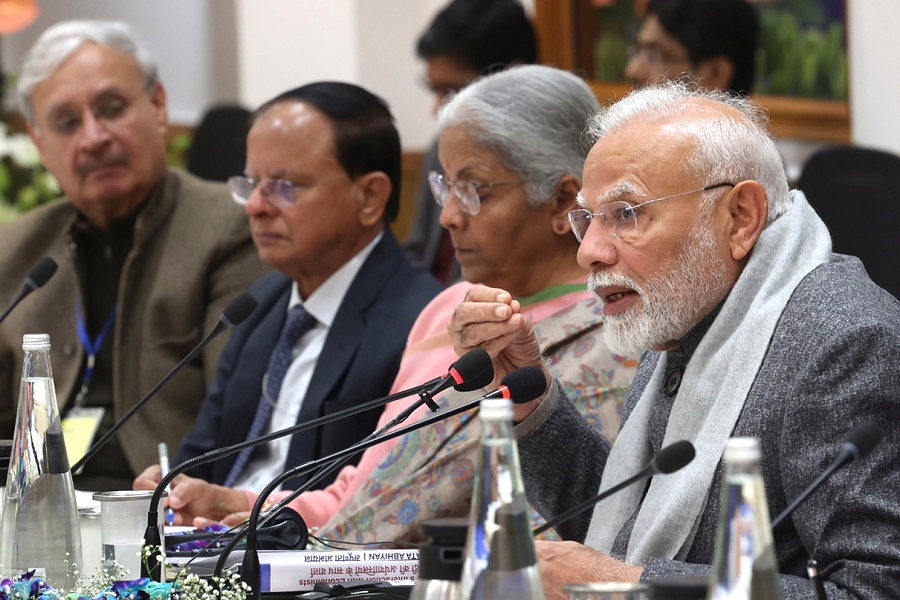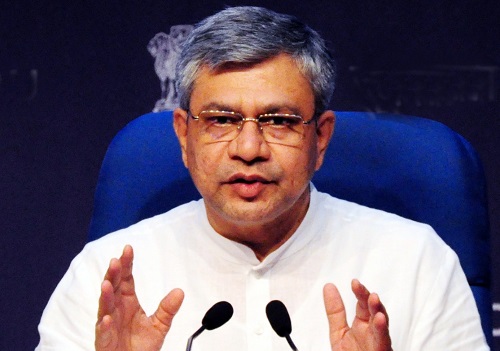Agri Commodity Technical Report 21 December 2022 - Geojit Financial Services

Follow us Now on Telegram ! Get daily 10 - 12 important updates on Business, Finance and Investment. Join our Telegram Channel
SPICES
• Barring coriander, other spices on NCDEX ended on a positive note on Tuesday. Jeera futures continued rising, hitting fresh record highs on fall in acreage and good demand. Turmeric futures gained as well. Tepid demand and rise in acreage weighed on coriander futures.
• According to Gujarat government data released on Monday, jeera acreage in the state has fallen 5% on year to 261,635 ha.
• According to data released on Monday by the Gujarat government, coriander acreage in the state has risen 84% on year to 218,109 ha.
• According to the Spices Board, India exported 572890.71 tons of spices during Apr-Aug 2022, down by 14 per cent, compared to 666540.53 tons exported during the same time period a year ago. Export of jeera stood at 91505.49 tons, down by 26 per cent, while that of coriander is seen at 18557.72 , down by 12 per cent. In the meantime, both turmeric and small cardamom exports rose by 15 respectively and pepper exports increased seven per cent. Small cardamom export stood at 3794.69 tons, while that of turmeric and pepper was 74393.62 and 9587.86 tons respectively.
• The value of India's spices market is expected to rise to 1 trln rupees by 2025 from 800 bln rupees this year, with the share of the organised sector likely to reach 50% from 38%, according to experts at the National Spice Conference. Currently, the value of the organised segment is pegged at 300 bln rupees. Improved quality, introduction of smaller stock-keeping units and increased shelf life of spices is one of the major reasons for growth of the organised segment, Ramkumar Menon, chairman of World Spice Organisation, said at the conference. Growth prospects in the case of spices are high and branding plays an important role, as it not only makes a memorable impression on consumers, but allows customers and clients to know what to expect from a company. It is a way to distinguish oneself from competitors and clarify what makes one a better choice, according to a panel of experts at the conference. Currently, the branded spices market is growing at a compounded annual rate of 10-15%, against 7-10% in the case of the unorganised segment. India, the world's largest producer, exporter, and consumer of spices, produces 75 of its 109 varieties. Around 85% of the spices produced in India are consumed domestically. The country accounts for more than 48% of global demand.

COTTON
• The US Department of Agriculture has lowered its estimate for global cotton output for 2022-23 (Aug-Jul) to 115.7 mln bales (1 US bale = 218 kg) from 116.4 mln bales projected a month ago. The reduction in the estimate is attributed to a decline in production in Pakistan, Australia, and Mali, the department said in its World Agricultural Supply and Demand Estimates report for December. The agency estimates global consumption at 111.7 mln bales, down from 115 mln bales projected in November. The consumption is seen lower due to a decline in use of mills in China, India, Pakistan, Turkey, and Vietnam, the report said. Global ending stocks of cotton in 2022-23 are pegged at 86.6 mln bales, up 2.3 mln tn from the figure projected last month. For India, the agency has maintained its estimate for production in December at 27.5 mln bales, unchanged from November. The domestic consumption estimate is seen at 23 mln bales, down from 24 mln bales projected last month. Exports have been revised lower for the country to 3.4 mln bales from 3.5 mln bales in November. Cotton ending stocks in India for 2022-23 are now seen at 11.4 mln bales, higher than 10.3 mln bales projected a month ago, the report said.
• The Cotton Association of India has retained its production estimate for the 2022-23 (Oct-Sep) season at 34.4 mln bales (1 bale = 170 kg), it said in a press release. Production of cotton in north zone, which includes Punjab, Haryana and Rajastan, is estimated at 4.7 mln bales by the association. The estimate for the central zone, which includes Gujarat, Maharashtra and Madhya Pradesh, is 19.8 mln bales. The estimate for the south zone is 9.2 mln bales. Other small states account for rest of the output. Total supply of cotton for the 2022-23 season is estimated at 38.8 mln bales. The association estimates imports at 1.2 mln bales, 200,000 bales lower from the previous year. Exports are seen at 3.0 mln bales, lower by 1.3 mln bales from the previous year. Arrivals of cotton as on Oct 31 were estimated at 1.8 mln bales by the association. The association sees closing stock of cotton as on Sep 30, 2023 at 5.8 mln bales.
• The area under cotton across India in 2022-23 (Jul-Jun) season was over 12.7 mln ha as of Thursday, up 7.5% from a year ago, data from the farm ministry showed. Sowing has been completed in northern states and acreage in Haryana, the top producer in the region, fell 5.4% on year to 650,473 ha. In Punjab, it fell 2.4% to 248,000 ha. Inadequate power supply for irrigationand non-availability of canal water during the initial sowing stage led to a drop in acreage in the northern states, experts said. In Gujarat, acreage rose to 2.5 mln ha as against 2.2 mln ha a year ago. In Maharashtra, the area under the crop increased 7.3% on year to 4.2 mln ha, while in Telangana, it fell 2.2% to 2.01 mln ha. Gujarat is the top producer of cotton in India, followed by Maharashtra and Telangana. Together, Gujarat and Maharashtra account for 50-55% of the country's total production.
• According to a circular from MCX, the exchange is in process of modifying the Cotton contract specification. Accordingly, with effect from August 29, 2022, no fresh positions will be permitted in Cotton January 2023 expiry contract which has currently nil open interest. Cotton February 2023 expiry and subsequent expiry contracts will temporarily not be launched for trading till such time the revised contract specification is finalized. No changes for other running Cotton contracts with Open Interest.

OTHERS
• The area under rabi chana across the country was at 9.8 mln ha as of Thursday, up 3.1% on year, data from the farm ministry showed. The increase is primarily due to higher sowing in the key growing states of Karnataka, Rajasthan and Maharashtra. Farmers in Karnataka have sown chana across 1.1 mln ha so far this rabi season, up 11.6% from a year ago. In Maharashtra, the second-largest grower, chana has been sown across 2.2 mln ha, up 24.6% from a year ago. However, the acreage in Madhya Pradesh, the top grower, declined 14.4% to 2.0 mln ha. In Gujarat, chana acreage fell 18.4% to 674,000 ha.
• The Indian Council of Agricultural Research – Indian Agricultural Research Institute has developed a new drought tolerant and high yielding variety of chikpea, 'Pusa JG 16', the institute said in a release. The new variety will enhance productivity in the drought prone areas of Madhya Pradesh, Bundelkhand, Chhattisgarh, southern Rajasthan, Maharashtra, and Gujarat. Drought is a major problem in these areas, and it sometimes leads to 50-100% loss of yield. "This variety will be a boon for the farmers of drought prone areas of Central Zone of the country," said A.K. Singh, the director of the institute, in the release. Besides being drought tolerant, this variety is resistant to fusarium wilt and stunt diseases with a yield potential of more than 2 tn per ha, the release said.
• The farm agency of Canada, one of the biggest exporters of pulses to India, has scaled up its estimate for masur prices in 2022-23 (Aug-Jul) due to firm export demand. The agency, Agriculture and Agri-Food Canada, now sees masur prices in 2022-23 at $800 per tn compared to its previous estimate of $750 per tn. "In October, the on-farm price of large green lentils in Saskatchewan rose by $220 per tn and red lentil prices increased by $65 per tn," the agency said in its November report. Price of chanafor 2022-23 is seen higher at $1,000 per tn, up from its October estimate of $925 per tn. The agency also raised price estimate for dry peas to $460 tn from the previous month's forecast of $440 per tn. On the other hand, it has cut the price estimate for dry beans to $1,210per tn from $1,235 per tn in October. The production estimates for chana, masur, dry peas and dry beans were left unchanged from last month Production of chana in 2022-23 is seen unchanged at 157,000 tn, and the output of dry beans is seen steady at 305,000 tn, according to the report.
• The Union Cabinet approved 2-9% hike in the minimum support price of six rabi crops for the coming marketing season starting April.The minimum support price of wheat has been increased by 5.5% to 2,125 rupees per 100 kg, while that of chana was raised by 2.0% to 5,335 rupees per 100 kg, the government said. Wheat, the crucial rabi crop, accounts for over 70% of the rabi foodgrain output, and chana is the largest rabi pulse crop. Minimum support prices, or the rates at which the government buys crops from farmers in case prices slip in the market, gives security and direction to growers in terms of realisation from their produce. They also help boost production of a desired crop. The Cabinet also approved increasing minimum support price of mustard by 7.9% to 5,450 rupees per 100 kg, and for masur by 9.1% to 6,000 rupees per 100 kg. The support price for barley was increased by 6.1% to 1,735 rupees per 100 kg. In the fourth advance estimate, the government predicted output of wheat in the 2021-22 (Jul-Jun) crop year at 106.8 mln tn, while oilseed production is pegged at 37.69 mln tn. Pulses output was seen at 27.69 mln tn, against 27.75 mln tn estimated in the third advance estimate.
• India’s Guar split exports increased in the month of October ’2022 by 2% to 3,800 MT as compared to 3,720 MT previous month. However, the Guar split shipments up by 47% in October ’22 compared to the same period last year. Out of the total exports, around 3,120 MT (82.11%) bought by China, 420 MT (11.05%) bought by USA and 260 MT (6.84%) bought by Russia.
• India’s Guar gum exports decreased in the month of October ‘2022 by 0.16% to 22,466 MT compared to 22,503 MT during previous month. The gum shipments were also down by 4% in October 2022 compared to the same period last year. Out of the total exported quantity,around 7008 MT (31.19%) was bought by the US, Russia bought 4,404 MT (19.60%), Germany 2,794 MT (12.43%), China 1,610 MT (7.17%) and Canada 1,483 MT (6.60%). We expect Guar gum export in Nov ’22 around 22,000-25,000 tonnes.

OIL AND OILSEEDS
• India's oilmeal exports surged 150% on year to 407,193 tn in November, according to data released by The Solvent Extractors' Association of India today. For Apr-Nov, exports of oilmeals were up 50% on year at 2.4 mln tn.The rise in oilmeal exports was mainly attributed to a surge in exports of mustard meal, which hit a record 1.5 mln tn in Apr-Nov, against 700,613 tn in the year-ago period. "The major consumer of Indian soybean meal are southeast Asia, where India has a logistic advantage and also can supply in small lots," the association said in a release. Additionally, as Indian soybean meal is non-genetically modified, it is preferred by certain European countries and the US for oilmeals, it said. The rupee's depreciation also helped revive exports of soybean meal in November. Exports of soymeal surged to 326,247 tn in Apr-Nov compared with 219,077 tn a year ago. During Apr-Nov, South Korea imported 603,686 tn of oilmeals from India compared with 408,478 tn a year ago, while Vietnam imported 567,372 tn, against 378,942 tn a year ago, the association said. In Apr-Nov, 784,061 tn of oilmeals were exported from Kandla port and 753,572 tn from Mundra port. Exports from Mumbai port, including Jawaharlal Nehru Port Trust, were at 152,969 tn. Around 244,236 tn oilmeals were shipped from Kolkata port, and 457,188 tn from other ports, the association said.
• In the ongoing 2022-23 (Oct-Mar) rabi season, farmers in the country have sown mustard across 8.5 mln ha as of Thursday, up 9.2% from last year, according to farm ministry data. Mustard is one of the main crops grown in India during the rabi season. The normal area under cultivation of the crop is 6.34 mln ha. Acreage in Rajasthan, the largest producer of the oilseed, has risen 12% on year to 3.78 mln ha. In Madhya Pradesh, the second-largest producer of mustard, the acreage has increased 26% on year to 1.36 mln ha. However, mustard acreage in Bihar and Uttar Pradesh is down by 16.4% and 8% to 107,000 ha and 870,800 ha, respectively. On Oct 18, the government increased the minimum support price for mustard by 400 rupees to 5,450 rupees per 100 kg to incentivise mustard farming.
• Malaysia's crude palm oil production fell 7.3% month-on-month to 1.68 mln tn in November, Malaysian Palm Oil Board data showed. The country's palm oil exports rose 0.9% on month to 1.52 mln tn in November, while outbound shipments of biodiesel fell 4.18% on month to 18,105 tn, the data showed. Palm oil is also used to make biofuel. As at November end, the country's total palm oil stocks were down 5% on month to 2.3 mln tn. Malaysia is the world's second-largest producer of crude palm oil, and India is the largest consumer of edible oils in the world.
• India's soymeal exports in November rose 32.7% on year to 150,000 tn, the Soybean Processors Association of India said today. For 2022-23 (Oct-Nov), soymeal exports increased to 200,000 tn from 135,000 tn in the previous year. The 2022-23 kharif season began in October. Soymeal is primarily used as poultry and livestock feed. Indian soymeal is non-genetically modified and considered rich in protein. In November, production of soymeal rose to 964,000 tn from 599,000 tn a year ago. The output for Oct-Nov was at 1.6 mln tn, down from 1.1 mln tn in the year-ago period, SOPA said. Soybean arrivals in spot markets totalled 2 mln tn in November, up from 1.4 mln tn a year ago. During Oct-Nov, arrivals rose to 3.7 mln tn from 2.9 mln tn in the year-ago period. By the end of November, mills, traders and farmers were left with around 11.2 mln tn of soybean stock, the association said. Soybean, a kharif oilseed, is sown during Jun-Jul and harvested in Sep-Oct.
• The US Department of Agriculture has scaled down its estimate for global production of oilseeds in 2022-23 (May-Apr) to 644.4 mln tn from 645.6 mln tn last month. "Lower sunflower, rapeseed, palm kernel, and cottonseed production forecasts are partly offset by higher soybean output," the agency said in its December report. The agency has projected global soybean output in 2022-23 at 391.17 mln tn, 0.64 mln tn higher than the estimate in November. The higher estimate is mainly due to an increase in production from India and Ukraine, according to the report. Soybean production in Brazil and Argentina is estimated at 152 mln tn and 49.5 mln tn respectively, steady from last month's projections. The estimate for soybean production in the US remains at 118.27 mln tn, unchanged from last month. Brazil is the world's top producer of soybean, followed by the US and Argentina. The agency has also scaled up its estimate for global ending stocks of soybean to 102.7 mln tn from 102.2 mln tn in November. The estimate for global soyoil production in 2022-23 has been kept largely unchanged at 61.9 mln tn. It has revised its estimate for global soyoil exports in 2022-23 marginally lower to 12.62 mln tn from 12.66 mln tn the previous month. Additionally, the department has projected global soymeal output in 2022-23 at 258.5 mln tn, up from 258.47 mln tn in November. The agency estimates global exports of soymeal at 70.09 mln tn compared with 69.95 mln tn pegged last month. Soymeal is a derivative of soybean. It is manufactured by crushing the oilseed and is mainly used in production of poultry feed.
• Justice B.V. Nagarathna of the Supreme Court asked the government if there was a compelling reason for the release of genetically-modified mustard as of now or the move could wait for a better understanding of the pros and cons. The question that has to be answered is whether an environmental release will have irreversible consequences, the judge asked. The apex court was hearing a fresh application pertaining to the release of GM mustard after it was cleared recently.
• The Solvent Extractors' Association of India today requested the Ministry of Consumer Affairs to increase the import duty difference between crude palm oil and RBD palmolein from 7.5% to at least 15% for better capacity utilisation and to support the domestic refining industry. "The current import duty difference between crude and refined oil of 7.5% encourages import of refined palmolein into our country as opposed to crude palm oil," the Association said in its memorandum. Palmolein imports during the just concluded oil year (Sep-Oct) has increased by 168%. India imports palm oil majorly from Indonesia and Malaysia. The Association feels that importing crude palm oil helps in value addition within the country and in generating employment. "The import duty difference of 7.5% levied by India between crude palm oil and palmolein is insufficient to block the imports of palmolein. Imports of crude palm oil can be encouraged by increasing RBD palmolein duty from current 12.5% to 20% without any change in crude palm oil duty," it said.
• The Solvent Extractors’ Association of India aims to grow genetically modified mustard across 200 farms in the ongoing rabi season and has sought seeds from the farm ministry for the purpose. In a letter to the ministry, the industry body has sought 100 kg of genetically modified mustard seeds to cultivate the crop across 200 model farms during the ongoing rabi season. Under its Mustard Model Farms Program, the solvent extractors’ body targets to have 1,000 mustard farms in the major growing states of Rajasthan, Madhya Pradesh, Punjab, and Uttar Pradesh. In a bid to boost production of edible oils, the environment ministry’s Genetic Engineering Appraisal Committee had on Oct 25 recommended environmental release of genetically modified mustard. The decision paved the way for commercial cultivation of India’s first transgenic food crop. In its letter, the solvent extractors’ body expressed hope that GM mustard cultivation "will lead to a yellow revolution to achieve 'atmanirbharta' (self-reliance) in edible oils" for India, a top importer of edible oils.
• The government has exempted wholesalers and big retail companies from stockholding limits on oil and oilseeds with immediate effect, the government said in a release on Tuesday. "As there is considerable decline in the prices of edible oil in the international market as well as the domestic market, the stock limit order was reviewed by the department," the release said. Due to the imposition of stock limits on oil and oilseeds, wholesalers and big chain retail outlets were facing hurdles in sales amid limited quantities, the release said. In October last year, the government had imposed stock limit on edible oil and oilseeds to address the volatility in domestic and global prices and keep a check on hoarding, especially of soybean seeds. It later extended the order till Dec 31. Doing away with the stock limits on wholesalers and big retail companies would allow them to keep various varieties and brands of edible oils. It would also boost the procurement of oilseeds, while ensuring remunerative returns to domestic farmers, the release said.
• India's exports of oilmeals rose 31% on year to 240,669 tn in September, according to data released by the Solvent Extractors' Association of India today. During the first six months of the financial year that began on Apr 1, exports of oilmeals rose 39% on year to 1.8 mln tn. The rise in exports of oilmeals was mainly attributed to the surge in exports of mustard meal that spiked to 1.2 mln tn in Apr-Sep from 605,355 tn in the year-ago period. However, in case of soymeal, exports remained subdued as "India is out priced in the international market", the association said in a release. Exports of soymeal plunged to 121,976 tn in Apr-Sep compared with 161,588 tn a year ago.
To Read Complete Report & Disclaimer Click Here
For More Geojit Financial Services Ltd Disclaimer https://www.geojit.com/disclaimer
SEBI Registration Number: INH200000345
Views express by all participants are for information & academic purpose only. Kindly read disclaimer before referring below views. Click Here For Disclaimer












 320-x-100_uti_gold.jpg" alt="Advertisement">
320-x-100_uti_gold.jpg" alt="Advertisement">












